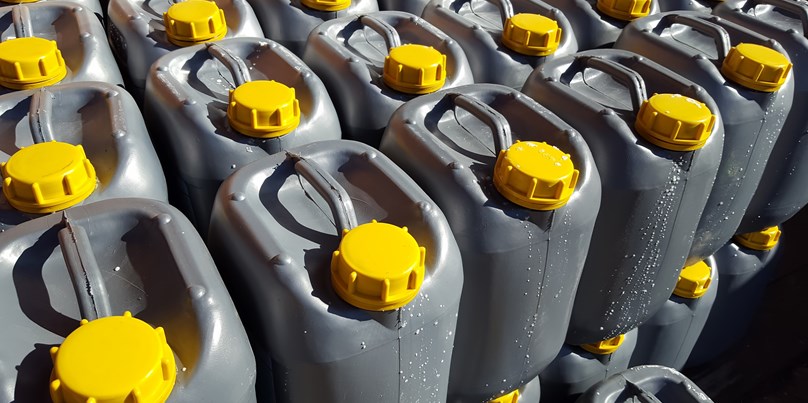Reducing fuel emissions
We all have a part to play in tackling climate change and the UK has committed to reducing its greenhouse-gas emissions to net-zero by 2050. As part of this promise, the government has a target to cut emissions by 78% by 2035, compared with 1990 levels.
The government’s groundwork to end the UK’s contribution to climate change by 2050 starts with ambitious strategies that support polluting industries to decarbonise while growing the economy and creating new, long-term, green jobs. The government says it will cut emissions from manufacturing by about two-thirds from 2018 to 2035, and also plans to cap emissions allowed by individual sectors each year.
As a result, businesses of all sizes, across a variety of industries, have pledged to reduce their emissions.
We’ve already deployed lower emissions diesel alternatives, and this article explores how you can reduce emissions from liquid fuel.
Liquid gas
If you’re currently using diesel power generators, you could benefit from immediate cost and emissions savings with liquid gas-powered generators which have a lower carbon footprint and enhanced green credentials.
Liquid gas is an available, reliable and proven option for power generation, and we’re partnering with Flogas to deliver liquid gas power generation solutions for businesses across the country.
Liquid gas emits less NOx, SOx, CO2e and PM than diesel which means liquid gas generators are an ideal solution for emission-sensitive sites.
Benefits
REDUCED ENVIRONMENTAL IMPACT: liquid gas has lower CO2e, PM, NOx and SOx
COST SAVING: if you’re affected by the end of tax relief on red diesel, liquid gas offers immediate cost savings
INCREASED PRODUCTIVITY: liquid gas is stored directly on-site and feeds the generator with constant and consistent power which increases up-time
RELIABLE AND CONSISTENT: liquid gas offers reliability regardless of weather conditions, which means you’re not at risk of power loss due to electrical outages or emergencies
SAFE: liquid gas has no risks of spilling, is safe to use and store and cannot be stolen
Quieter: generators powered by liquid gas are quieter, and there is no requirement for the Ad-Blue to reduce NOx emissions
COMPLETE SOLUTIONS: a temporary or permanent power generation solution that includes a power generator and liquid gas supply available nationwide
HVO Biodiesel
HVO is a new sustainable alternative that can be used as a drop-in replacement for gas oil/red diesel, and it can be used in all diesel engines.
What is HVO?
HVO or hydrotreated vegetable oil is a FAMEfree (fatty acid methyl ester) and fossil-free environmentally friendly mineral diesel. It is synthetically made through the hydrotreatment of either vegetable oils or animal fats and is manufactured from 100% renewable raw materials such as corn or tallow. It is fully biodegradable and complies with EN15940 and ASTM D97 5.
Unlike biodiesel, it does not deteriorate over time and can be used in extreme temperatures.
HVO fuel versus FAME diesel
Functionally HVO is almost identical to fossil diesel thanks to its paraffinic petrochemical structure. This means it can be handled and used as a drop-in alternative without the need to update generating equipment and infrastructure, and there’s no need to clean out existing fossil diesel.
Whilst there are many other similarities, including energy content, density, viscosity and flash point, HVO has a number of advantages over fossil fuels. The chemical process used in its manufacture ensures a consistent product that contains no esters or contamination.
HVO fuel meets the requirements of current legislation – it’s 100% bio and FAME-free, so it doesn’t face the issues of stability faced by many existing biodiesel and gas oil products. This makes HVO a much more stable product with a reduced risk of degradation when in storage due to zero FAME and sulphur content. The production process affords a shelf life of up to ten years.
With a high cetane number of greater than 70 and low cloud point of -32ᵒC, HVO provides improved cold-start performance, clean combustion, and less chance of waxing in extreme temperatures than regular DERV.
Can HVO reduce harmful emissions?
Yes. Due to the consistent nature of HVO, combustion is more efficient. Independent tests have demonstrated a significant reduction in NOx and therefore improved air quality.
Benefits
LOWER NOX: NOx levels are reduced by up to 30%
LOWER PARTICULATES: Particulate, PM25 and PM10, are lowered by up to 86%
LOWER CO2 e LEVELS: up to 90% less greenhouse gases (CO2 e) and emissions
PROLONGED SHELF-LIFE: has a much longer shelf life than white diesel (up to ten years)
SEASONAL PERFORMANCE: excellent in cold weather
Talk to the team sales@dtgen.co.ukto find out more about reducing emissions from your standby power generator.
*Net zero is the point at which the country is taking as much of these climate-changing gases out of the atmosphere as it is putting in.


